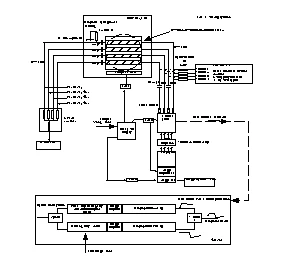Stripline Imagers For X-rays Introduction
Description
These imagers use MCP gating to provide shuttering contrast. The phosphor is maintained at a constant potential behind the MCP. This technique offers very high speed operation (below 30ps has been achieved by some users), a high extinction ratio and good sensitivity, sometimes augmented by a second continuously run MCP behind the gated one. The main disadvantage of this system over the system of gating the MCP and phosphor together, is that the latter is more tolerant of gas entering the detector after the event as there are no DC potentials that can break down.
Kentech SLIX systems can offer slow phosphor gating (usually a gate off in a few milliseconds for 10 seconds after the event) but this may not be fast enough in some x-ray devices. Fast valves are also available from other suppliers which can open and close a line of sight to a source. Valves with both open-to-close and close-to-open-to-close are available. In order to gate an MCP quickly, the MCP is produced without the regular electrodes and then strip line electrodes of copper or gold are laid down on the front surface. The rear is also coated with continuous conductor. The strips are then pulsed to achieve the gating. The characteristic impedance of the strips is typically in the range of a few Ω to 25Ω depending upon the strip width and MCP thickness. The lower the impedance then the more current is required. Also more strips require more current. Generally the total pulse power required to drive these systems depends upon the total image width (many strips for many channels) and the MCP thickness. Most pulse generators and cabling are based upon a 50Ω impedance. In order to drive lower impedances efficiently many cables must be driven in parallel and then several of these will drive each channel on the MCP. Typically the final cabling up to the MCP will be in 25Ω cable. If gating speed is important it may be easier not to bother with matching and loss coupling efficiency but gain simplicity, flexibility and gating speed.
Stripline Imagers For X-rays Introduction
Specifications |
|
|---|---|
| Sensor Type: | CCD |
| Detection Method: | Direct Detection |
| # Pixels (Width): | -- |
| # Pixels (Height): | -- |
| Pixel Size (Square): | -- um |
| Bit Depth: | -- bit |
| Full Frame Rate: | -- fps |
| X-Ray Energy Range: | 100-100000eV |
For pricing, technical or any other questions please contact the supplier
- No registration required
- No markups, no fees
- Direct contact with supplier
-
Ships from:
United Kingdom
-
Sold by:
-
On FindLight:
External Vendor

Claim Kentech Instruments Page to edit and add data
Frequently Asked Questions
Using a second continuously run MCP behind the gated one can sometimes augment the sensitivity.
The main disadvantage of the system of gating the MCP and phosphor together is that it is more tolerant of gas entering the detector after the event as there are no DC potentials that can break down.
The total pulse power required to drive Stripline Imagers for X-rays depends upon the total image width (many strips for many channels) and the MCP thickness.
Stripline Imagers for X-rays use MCP gating to provide shuttering contrast.
The characteristic impedance of the strips is typically in the range of a few Ω to 25Ω depending upon the strip width and MCP thickness.
